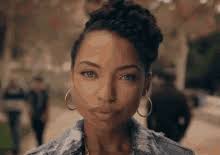What race first wore dreadlocks? Some of the earliest depictions of dreadlocks date back as far as 1600–1500 BCE in the Minoan Civilization, one of Europe’s earliest civilizations, centred in Crete (now part of Greece).
How do Caucasians get dreads?
Can white hair get dreads? Twist and Rip Method
One of the most common ways to start dreads on white hair is to do the old twist and rip. It requires you to part out a section of hair, twist it a few times in one direction, then separate the ends in two, and pull each half outward until you feel resistance.
What race do dreads come from? The Aborigines and native populations of New Guinea have been sporting the style for centuries now, and dreads are also been worn around Africa, notably by the Maasai, the Ashanti, the Galla, and the Fulani tribes.
What race first wore dreadlocks? – Additional Questions
What do dreadlocks symbolize?
Today, Dreadlocks signify spiritual intent, natural and supernatural powers, and are a statement of non-violent non-conformity, communalism and socialistic values, and solidarity with less fortunate or oppressed minorities.
Who did dreadlocks first?
The first known examples of the hairstyle date back to ancient Egypt, where dreadlocks appeared on Egyptian artifacts. Mummified remains of ancient Egyptians with dreadlocks have even been recovered from archaeological sites.
Are dreads African?
Although dreadlocks have been worn continuously by people of colour in Africa, Asia, and the Americas from ancient times until now, their popularisation in the West only occurred in the Seventies. This was due to the success of Jamaican-born reggae artist Bob Marley following his conversion to Rastafarianism.
Did dreads originate in Africa?
AFRICAN DREADLOCKS
Dreadlocks have a long history in Africa. Victoria Sherrow, the author of the Encyclopedia of Hair, A Cultural History 1, named the priests of the Ethiopian Coptic Orthodox Church as some of the first people to have sported dreadlocks in Africa, as early as 500 BCE.
Are dreadlocks Jamaican?
History of Dreadlocks
Dreadlocks are not unique to Jamaica and Rastafarians. The dreadlocks hairstyle originated in Africa and was worn by various tribes there. The earliest tribe this hairstyle can be attributed to is the Masai tribesmen of Kenya. Many of the warriors of this tribe wore this hairstyle.
Are dreadlocks Indian?
Early discoveries of dreadlocks have come from places in India, and Egypt. The dreadlocked deity Shiva had a significant impact on Indian culture and was an inspiration for millions of people that practiced Hinduism.
Is it cultural appropriation to wear dreadlocks?
Trend. Though used by people of all races and religions, it is considered cultural appropriation for white people to wear dreadlocks.
Do dreads smell?
Dreadlocks are essentially matted hair, which has the potential to trap odors quicker than loose hair, but this doesn’t mean that dreads smell bad or they’re doomed to eventually smell bad. If you don’t know how to care for your dreads properly, your dreads could end up with an offensive smell.
What culture started braids?
“The origin of braids can be traced back 5000 years in African culture to 3500 BC—they were very popular among women.” Braids are not just a style; this craft is a form of art. “Braiding started in Africa with the Himba people of Namibia,” says Pace. “These people have been braiding their hair for centuries.
What braids are cultural appropriation?
Ghana braids or cornrows become “boxer braids” — I’m looking at you Kim Kardashian — and Fulani braids become “Bo braids”, named after 70s it-girl Bo Derek. By taking these styles and not giving credit to the originator, they are literally erasing black hair culture.
Can Latinas wear box braids?
Latinas can certainly wear “black” hairstyles. This same statement applies to all races and ethnic groups regardless of whether they’re Latina, African, Dominican, Caucasian (e.g., white), Afro Latina, mixed, etc., or from our cultures.
Did Vikings braid their hair before Africans?
So, though Viking men usually wore their hair long — except for Viking warriors, who probably wore their hair very short, with longer bangs in front — the photographic and textual evidence that we have today does not support the idea that male Vikings wore braids as a common hairstyle.
Did White Vikings have dreads?
Both Viking men and women are thought to have worn dreads. While married Viking women usually tucked their long hair into a high bun, unmarried Viking women wore their hair loose, in braids, or in dreads.
Did Vikings have dreads or locs?
The fact is the Vikings were one of several ancient people groups to have worn dreadlocks, along with the ancient Gauls, Celts, Indians, and many more. The reasons the Vikings wore dreadlocks isn’t clear, but it was likely due to practical and cultural reasons.
Who first wore cornrows?
Cornrows on women date back to at least 3000 B.C. and as far back as the nineteenth century for men, particularly in Ethiopia. Warriors and kings were identified by their braided hairstyles.
Are cornrows Mexican?
Traditional Mexican braids don’t include styles like box braids and cornrows. Therefore, some people may consider it cultural appropriation when those styles are worn by Mexicans who don’t have African heritage. If you want to err on the side of caution, stick with braided styles unique to your cultural heritage.
Are cornrows and dreadlocks the same?
Cornrows are temporary.
They are a braided hairstyle and can be un-braided whenever the wearer is tired of them. Dreadlocks are semi-permanent. They can be permanent if the wearer wishes, but we say semi-permanent because there are times when wearers opt to ‘un-loc’ their hair.


